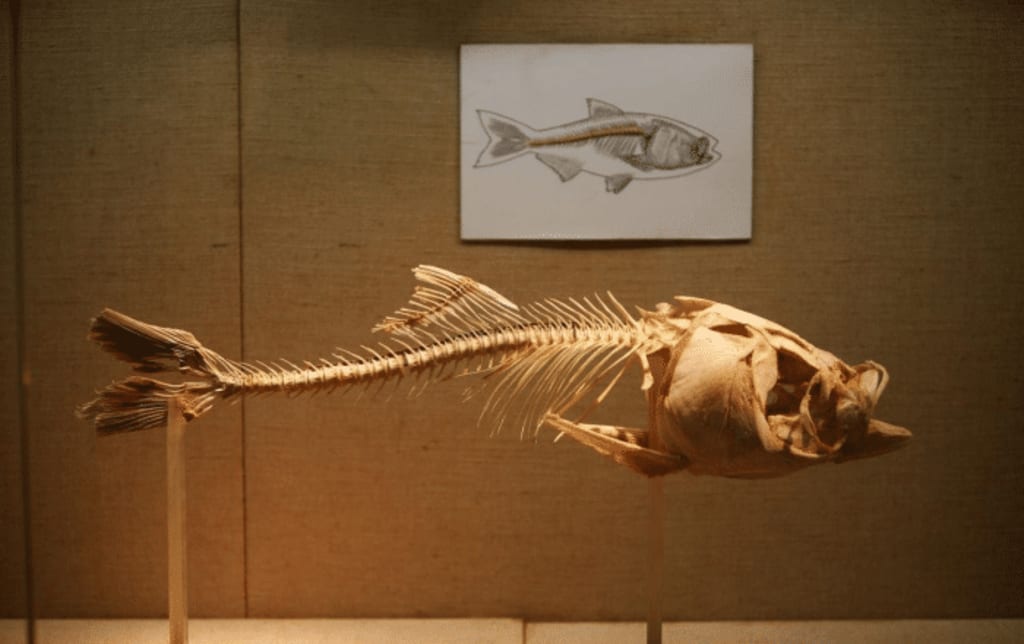Why do animals eating fish rarely get stuck? Do they have any special fish-eating skills?
Special fish eating skills

Fish meat is delicious and tender, not only do humans like to eat it, nature will eat fish in many animals. Although the fish is good, a lot of thorns, are a little careless, and it is easy to be stuck in the throat of the fish thorns, I think we all have more or less dominated by the fear of fish thorns!
The fish that we eat every day are mostly freshwater fish. It is only in the lower freshwater fish that fish spines exist. Fish spines, thin and pointed fish bones, are the common name for the intermuscular bones of fish. These small spines exist to compensate for the lack of muscle strength, providing support and power points for the muscles. Some of the more evolved freshwater and marine fish have few spines, and some can be described as almost spine-free.
Humans get stuck on fish spines when they eat them, so do wild animals have this problem when they eat fish too? How do they get rid of fish spines and what are their special tricks?
In nature, many animals can eat fish and eat in different ways, they also face the problem of fish spines when eating fish, so how do they solve it?
For, animals that eat fish as their main food, do not get stuck by the thorns, such as penguins, cormorants, brown bears, and species such as otters. For animals that can eat fish, but do not eat fish as their main food, such as cats and humans, there is a risk of getting stuck eating fish.
Brown bears: Swallowing mainly, biting secondarily
Alaska's brown bears are very good fishers and especially enjoy eating migrating salmon. Every year, when the salmon migrate upriver to breed, the bears wait in the river to destroy the large numbers of salmon that pass by and store up energy for hibernation.
Brown bears also eat fish in a relatively simple and brutal way, usually by biting and swallowing. Usually, the fish is first bitten a few times and swallowed directly after biting into a size suitable for swallowing. This way brown bears can reduce the possibility of fish spines and mouth and esophagus contact, and the esophagus of carnivores is generally harder. When it reaches the stomach, the brown bear's stomach acid can soften and digest the fish spines directly and does not harm the stomach. As you can see, the brown bear swallowed and chewed in this way coupled with a strong stomach function, making it eat fish without pressure.
When food is plentiful and there are too many fish to eat, some brown bears will pick and choose only the fattest parts of the fish's belly, as well as the skin and guts, which are almost free of spines.
Birds: Swallowing a fish whole
There are also many birds in nature that feed on fish, such as kingfishers, herons, cormorants, penguins, etc.
It is important to know that birds do not have teeth and usually rely on their hard beaks to bite down on food and then swallow it directly. So, when birds catch fish, they also swallow the whole fish directly in one gulp, just like noodles giggling in. And birds are also very hard digestive tract, but also swallowed some small stones stored in the stomach to help grind food, even hard stones can not hurt their stomach, the district of fine fish spines and what is considered. And fish to the stomach, gastric juices can slowly digest the fish. Birds in eating fish swallowed whole, the fish wrapped in fish spines, swallowing process also does not have the problem of fish spines stuck in the throat.
Penguins generally eat smaller fish, while cormorants are awesome and can swallow fish as big as 1 kilogram at a time!
Otters: slow chewers and slow swallowers
Some rodents, such as otters, eat fish slowly, chewing bones, spines, scales, flesh, and guts to pieces before eating, so there is no need to worry about the spines.
Above all, they belong to the main food of fish animals, these animals do not eat fish stuck in the trouble.
"Cats with fish eating tools
Cats are also experts in eating fish, but they are also afraid of fish spines. After all, they often walk on the shore, which does not have wet shoes, often eat fish and cats, and sometimes will be stuck to the thorns, but after being stuck they have to be much more than the human way.
Domestic cats eat fish, usually eat cooked fish, fish cooked, the bones will become hard, fish and fish bones are easier to separate. And cats have a special construction tongue, full of dense barb spines. When eating fish, the "barbs" on the tongue can remove the flesh from the bones and eat into the stomach, so cats generally do not eat fish bones. Even if the occasional fish spike is accidentally ingested, they have a solution.
Because the structure of the cat's esophagus and digestive system structure is also very special. Even if a fish spike is accidentally swallowed, its stomach acid can digest many small spikes. Moreover, the walls of the cat's esophagus are relatively long, and the esophageal wall has long muscles to control regurgitation, so they can spit out the swallowed unpleasant food or foreign objects by themselves relatively easily. Therefore, once a fish spike enters and feels uncomfortable, the cat is also able to spit it out again through the regurgitating muscle.
Cats in the wild can only eat raw fish, the bones and flesh of raw fish are not easy to peel, and cats usually chew the fish spines and swallow them. This way of eating, although easier to get stuck by the fish spines, but there is just mentioned the special body structure do not worry too much about being injured by the fish spines.
However, in general, the consumption of fish with relatively large and few fish spines is not a big problem for cats. But if the fish is very many and small, cats sometimes difficult to stand up to their special tongue and digestive system, it is difficult to scrape down all those fine fish spines or vomit out on their own, and fish spines will inevitably be stuck in the throat in a dilemma, very uncomfortable. Therefore, to avoid your cat being stuck in the fish, you should try to give it to eat less thorny fish.
Summary
Natural selection has created many animals that can eat fish, and they all can digest fish spines. Some have digestive systems that can digest fish spines; others have teeth thick enough to chew them up.
About the Creator
Derwall Don
The development of science and technology and the function is inexhaustible, science is a wonderful thing。






Comments
There are no comments for this story
Be the first to respond and start the conversation.